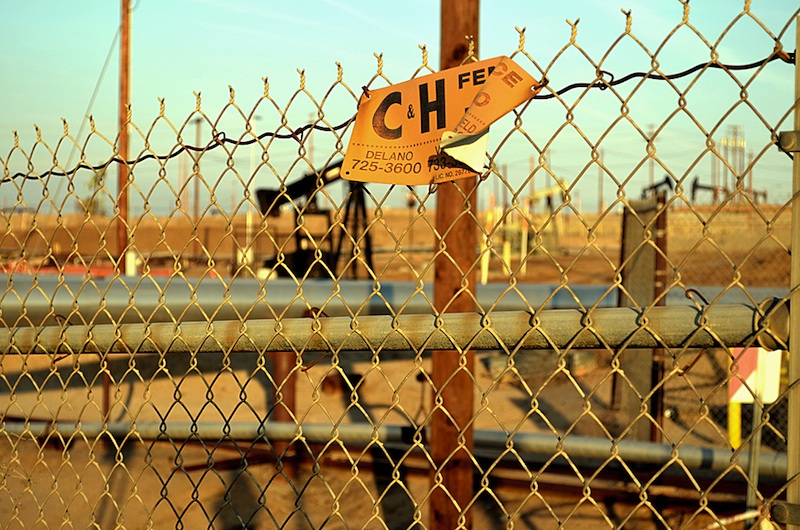
Oildale by Rudy VanderLans, 2015
There is a tendency now for photographers of place to pull back a long way from a scene, especially when engaged in any kind of topographic study. The picture must still be composed, but the features of an area are what they are, and distance will have a determining effect. The long view feels, and probably is, more objective. While there are always exceptions to any general rule, the panoramic viewpoint reduces the opportunity to make compositional choices that might express an individual aesthetic vision.
With close-ups, the possibilities multiply. Here, selection and framing are of the essence. The part will represent the whole, and there are so many possible parts in an infinity of combinations. The photographer is still recording a scene, but much more than with a long shot, where key visual relationships are a given, they are willing an image into being.
Rudy VanderLans, graphic designer and former publisher of Emigre magazine, took this digital picture on a road trip to Oildale, north of Bakersfield in central California. As its name bluntly conveys, the area is an oil field, and the landscape is densely scattered with pumpjacks. VanderLans isolates the black skeleton of one of these “nodding donkeys,” and there are other blurred derricks in the distance. Yet, rather than concentrating on the pumps, he puts the fence that marks the site’s perimeter—dividing public space from the zone of commercial enterprise—into sharp focus. Everything beyond this barrier is flattened in the shallow visual field into a jumble of vertical structures and pipelines. With only this photo as a guide, we would have no inkling of how extensive the blighted ochre terrain of oil wells might be.
The picture appears in VanderLans’ postcard-sized photobook Still Lifes, California, and in a brief introductory note he describes the state’s environment as “beautiful, incongruous and dismal” by turns. His aim, he says, was to seek out places where these qualities coincide. The poor, predominantly white neighborhood of Oildale has a reputation for crime and racism—the nu metal band Korn’s song “Oildale (Leave Me Alone)” spray paints the scene. The landscape where many local people find work is harsh, ruined for anything except oil production. Most photographs of the area are nothing like as incongruously lyrical as this one. What makes the picture so arresting is its marriage of structural complexity, which stops short of chaos, with a blue-brown palette of great chromatic nuance. It’s the color that gives form to the scene, and none of this could have been discovered without moving in for a closer look. “Dismal beauty” says it all.


Comments [2]
01.04.16
05:44
01.14.16
12:15